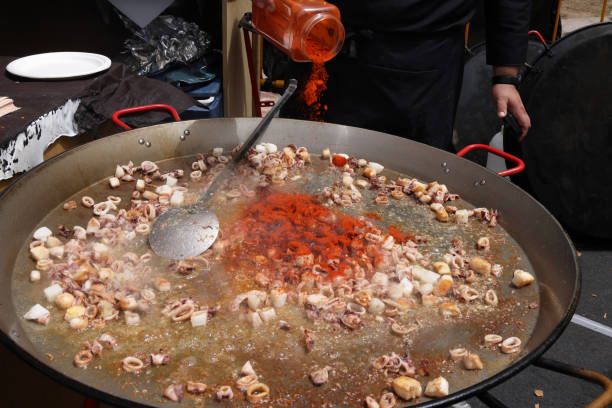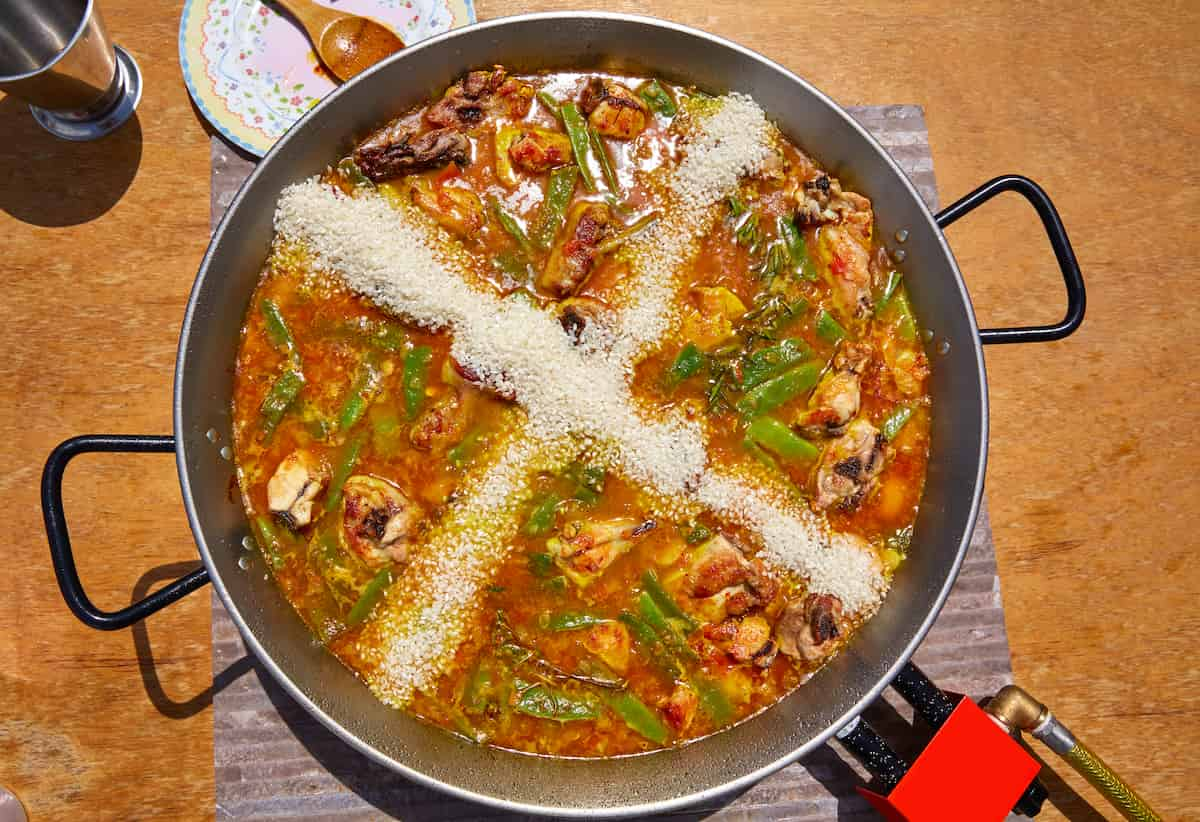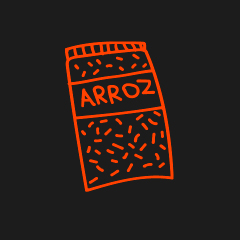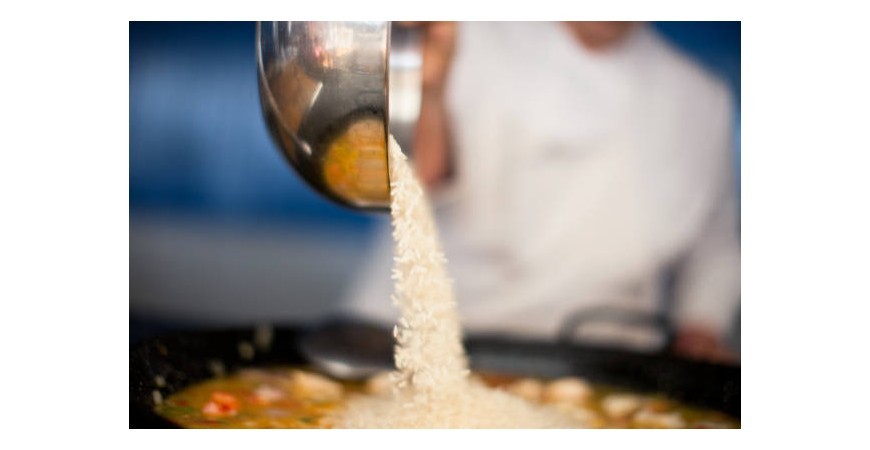The secret of the perfect paella
You have probably heard someone declare at the table after tasting a dish "this x is perfect". More than just a simple declaration that the food is very good, you may have wondered, is it really perfect?
Perfection is something very subjective, so much so, that some say it is unattainable, and we don't blame them, because what is perfect changes from person to person, and this also happens with paella. Is your paella perfect with meat, fish or maybe only vegetables, should the rice be cooked to perfection or maybe we prefer it less, do we use the classic ingredients of the recipe or do we decide to experiment, do we use the classic ingredients of the recipe or do we decide to experiment, do we use the classic ingredients of the recipe or do we decide to experiment?
No matter how many variations we may see and doubt to make our perfect paella, there are always certain guidelines and universal factors that we cannot ignore and that every paella that wants to be called perfect must follow. These guidelines are traditional and can be found in all paella dishes.
To make sure that, whatever you do, your paella is perfect, we are going to take a look at the most important traditional guidelines during paella preparation in this blog post.
Use enough oil in your paella
As we have mentioned in other posts in our blog, oil is essential in a paella, it is necessary for many important factors, such as making a good socarrat, so that our rice does not burn and as a vehicle for transporting the flavour of the fats from the sofrito to the rice and ingredients.
Remember, the right amount of oil for paella is 25/30 ml per person.
At the same time, it is very important to have a sufficient quantity of oil so that once all the rice has been cooked, there is an extra quantity left in the base of the paella. This excess oil will help us to form the socarrat, the caramelised rice that we like so much.
A tasty broth is essential for the flavour of your rice.
What gives flavour to our paella, is it the sofrito, the meat, the vegetables...? The answer is actually everything, but to be precise, it is their combination when it becomes broth. The broth of the paella is what is absorbed by the rice and is in fact what makes our rice so tasty.
A good broth, whether prepared by us beforehand or made by adding water to the sofrito in our paella, as we Valencians do, is absolutely necessary for our paella to achieve the best possible flavour.
Also, if you are making a traditional Valencian paella, don't forget to use the Valencian garrofón, native to Valencia, which absorbs a large part of the broth and, therefore, acts as an enormous source of flavours in every mouthful.

The sofrito is prepared with a low heat and the inner ring
Do not turn on all the burners to prepare your sofrito, not only are you likely to burn the sofrito by using so much power, but you may also bulge the paella due to the lack of a medium (water) to transfer the excess heat. What you should do is turn the inner ring on low heat and cook your meat and vegetables quietly.
Why should we do it this way, the answer is very simple, frying the meat on a low heat will cause the flavours and fats from the meat to bind to the oil, later, when we introduce the water into our paella, this oil will coat the grains of rice as the water is absorbed and evaporates, giving that extra flavour so appreciated to our paella.
Bear in mind that adding the water should not mean that you have to turn up the heat to maximum power, remember, water boils at 100 degrees, so increasing the power will only make you evaporate more water than necessary.
The best way to cook paella is based on the traditional way of cooking paella, the first 8/10 minutes on high power, and the remaining 8 minutes on low power.
Using this strategy, we make sure to evaporate any excess stock we have in the 10 minutes, until the rice can be seen above the stock or "peek through", after which we can let our rice finish with the remaining stock on low heat.
Make sure you calculate the amount of water and rice correctly.
Under no circumstances can your paella run out of water, it is necessary to turn the sofrito into broth, cook the rice and be absorbed by the ingredients of our paella to give us that characteristic flavour that we like.
Make sure before preparing your paella that you have correctly measured both the amount of rice you are going to use and the equivalent amount of water you need to prepare it. We don't want to drown the paella, but neither do we want it to run out of water prematurely.

Don't stir the rice and spread it equivalently
Repeat after me: "We do not move the rice in the paella". To be more precise, we must not move the rice in the paella when it is in the broth, this is because moving it will turn our paella pasty, as we will make the starch of the rice come loose when we move it sharply.
In case of moving the rice, it would be when we introduce it into our paella after the broth, in which case we recommend using the traditional technique of introducing the rice crosswise.
In this way, we can spread the rice evenly over our paella, and spread it over the surface of the paella with a paddle or spoon slowly and without sudden movements to try to release as little starch as possible.
Different types of rice have different cooking times.
A Senia variety rice is not cooked at the same speed as a Marisma or an Albufera. The best way to make sure you cook your rice for the right amount of time depending on the variety is to take a look at the back of your rice packet, here you can see the time recommended by the manufacturer that you should have your rice cooking for it to be perfect.
At the same time, don't forget that certain rices are more suitable for different situations or purposes, so identify which rice is perfect for your paella before you make it.
Traditional or particular techniques
Certain provinces in Spain have their own traditional techniques and tricks that, over the years, have ensured that the paellas of the area are, according to those who try them, perfect.
Bear in mind that as mentioned above, perfection is subjective, but this does not imply that we have to deny the use of these techniques, after all, we can define a perfect paella as one that has followed the traditional guidelines for its preparation.
With this in mind, feel free to experiment with which traditional technique best suits your version of the perfect paella, be it using the water with the sofrito in the paella to make the broth as we Valencians do, or using the salmorreta alongside your paella as is done in Alicante. Just make sure your paella tastes perfect for you and your guests.
We hope this review will help you make sure that whatever you do, that paella you serve at your table is perfect. Enjoy your rice, rice lovers!




